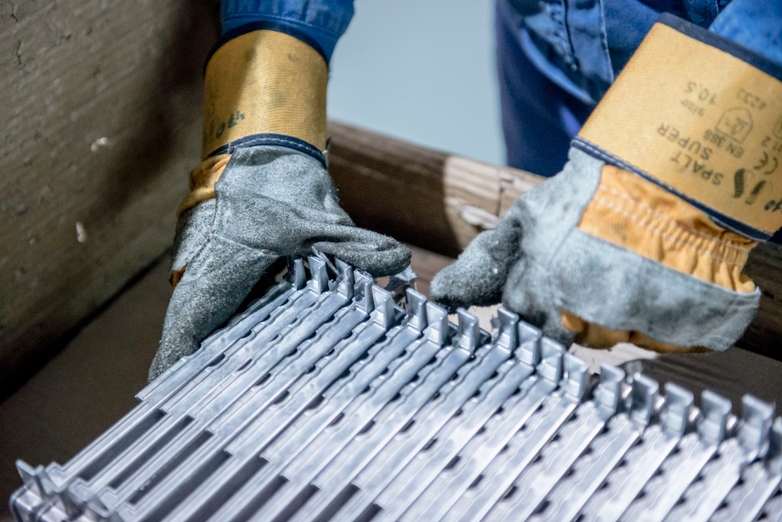Mold release is a critical step in the die casting process, ensuring that precision metal components eject from the die effortlessly and free of defects.
What is Mold Release?
Mold release, also known as die spray or die lubricant, is a liquid that is applied to the steel mold before each shot of molten metal. The liquid evaporates when it comes into contact with the hot steel, leaving behind a thin, lubricated coating. This coating helps to prevent the metal from sticking to the mold, making it easier to eject.
Why is Mold Release Important?
Mold release is important for several reasons:
- It prevents the metal from sticking to the mold, which can cause defects in the finished part.
- It helps the metal to flow more freely into the mold, resulting in a more accurate casting.
- It reduces the amount of force required to eject the part from the mold, which can extend the life of the mold.
- It can improve the cosmetic finish of the part.
Types of Mold Release
There are many different types of mold release available, each with its own advantages and disadvantages. The type of mold release that is best for a particular application will depend on the type of metal being cast, the complexity of the part, and the desired finish.
- Water-based mold releases are the most common type. They are relatively inexpensive and easy to use. However, they can be less effective than other types of mold releases in preventing porosity.
- Oil-based mold releases are more effective at preventing porosity than water-based mold releases. However, they are more expensive and can be more difficult to use.
- Silicone mold releases are a good choice for parts that require a high-quality cosmetic finish. They are also effective at preventing porosity. However, they can be more expensive than other types of mold releases.
Mold Release Concerns
There are two main concerns that customers typically have about mold release:
- Will mold release cause porosity?
- Is mold release safe for medical and surgical applications?
Porosity is a natural occurrence in the die casting process. However, the amount of porosity can be minimized by using the right type and amount of mold release. Dynacast works with customers to select the mold release that is best suited for their specific application.
Mold release can be safe for medical and surgical applications if it is properly applied and the part is properly cleaned after casting. Dynacast works with customers to ensure that their mold release is safe for their specific application.
Dynacast is an ISO 13485 Certified Die Casting Manufacturer
Dynacast is an ISO 13485 certified die casting manufacturer. This means that we have met the highest standards for quality and safety in the medical device industry. We use only the highest quality mold releases that are safe for medical and surgical applications.
Contact Dynacast Today
If you are looking for a die casting manufacturer that can provide you with the highest quality parts, contact Dynacast today. We have over 50 years of experience in the die casting industry and we have a team of experts who can help you with every step of the process.
We will work with you to select the right type of mold release for your application and we will ensure that it is applied correctly. We will also work with you to ensure that your part is properly cleaned after casting.
